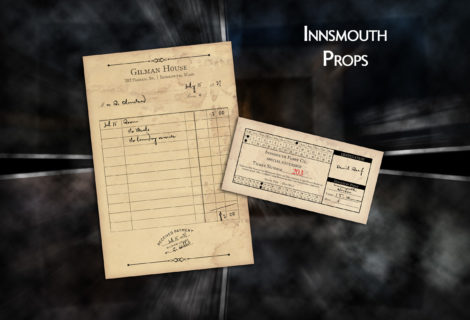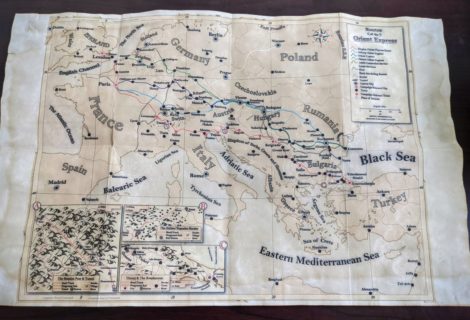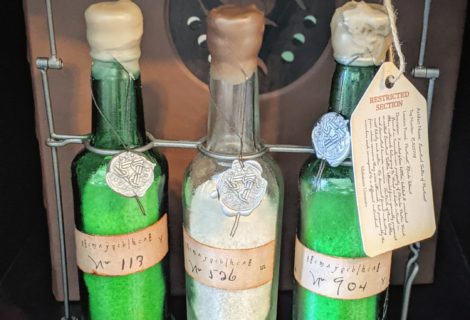One Among Many: Choosing a System
Choosing a System – Part 1
This series of posts is going to discuss some of the existing games set in the Cthulhu Mythos that are currently popular and why I’m not just playing one of these games. To be fair, I actually am playing some of them and have great opinion of the others, but they just don’t fit what I want to play with my family – at least not on their own. I also touched on some of this in my last post (Background and Early Concept), but this will explore the issues in a bit more detail. Beware that this point could conceivably contain some minor spoilers related to some of these games.
Of course, there are numerous mythos-themed games on the market right now. Specifically, I’m looking to play a game that embraces the cosmic horror of Lovecraft’s mythos, as well as the investigative gameplay suggested in numerous mythos fiction and brought to gaming most notably through Call of Cthulhu. With this in mind, quite a few games are ruled out, particularly those where players take the role of cults, Great Old Ones, etc.
Roleplaying, Board, and Card Games
The mythos games I actually play most often are those produced by Fantasy Flight Games, specifically Mansions of Madness (MoM) and Arkham Horror: The Card Game (AHTCG). I’ve played the original Arkham Horror board game (and have the latest edition preordered). I’ve also played both editions of MoM, and while I mainly play the second edition these days, I expect to draw some inspiration from the first edition as well. Needless to say, Fantasy Flight Games has made a fair amount of money off me.
Likely the biggest reason that I play these games more often than others is that they can actually be played solo. This is a huge advantage in making these games accessible for easy play, but it also results in some drawbacks which I’ll come back to in a moment.
As with most of FFG’s games set in the mythos, both of these games derive their difficulty from a combination of time pressure and trying to make the most efficient use of available character actions. While this works to help realize the overwhelming odds the character’s face, it also results in every game feeling similar in many ways. It also strongly encourages a very meta-based approach to playing the game, which tends to discourage any roleplaying or attachment to characters. It also makes the game much less accessible to the people that are less avid gamers.

Mansions of Madness (image taken from the FFG website)
Between these two games, Mansions of Madness is the most detailed. Each scenario includes rooms or buildings the investigators can explore in detail, there are detailed clues that must be pieced together, and it is probably the closest board games currently get to a Call of Cthulhu type of investigation. However, the fact that each scenario is limited to a single location is a major drawback. There is one level of detail, and the level of complexity that can exist within a single location is very limited. There is no campaign of any kind, nor any character development. While it might be theoretically possible to link related scenarios together, each occurring at a separate location, this has not been implemented and would also create some other issues.
Mansions of Madness also tends to be fairly straightforward in the win-or-lose department – even to the point that it sometimes departs from what would make sense in a mythos story. For example, I played a scenario in which the investigators had to locate some information and then escape town by boat. This is generally considered one of the most challenging scenarios in the base game and involves exploring an area around the docks to find what you need while evading wave after wave of enemies. I played using three investigators, and managed to get two of them and the information to the boat. I had used one investigator to lure the enemies away and create an opening to the boat for the others. Due to some poor in-game text it was not obvious that I had to get everyone out, so the remaining investigator was not in a good spot. Nevertheless, I managed to get him to the docks, which were now surrounded. Using a lantern he started a fire that cleared the docks of enemies so the others could escape, but died in the process. Now in terms of mythos fiction, this would probably be considered a “good” ending – one character sacrifices himself to save the others and ensure they escape with information necessary to save the world – but in MoM this was just ruled a loss.
In MoM, there are standard actions that are always available to characters, and occasionally some scenario-specific actions, but the players are always limited to just a handful of predetermined actions. I also decided to try playing a scenario using my work-in-progress system in place of the basic mechanics to see if it would work. While successful, this experiment also made me realize something else about the game: It involves a LOT of rolling. Once each scenario gets to a certain point, you’re making a minimum of 1-2 rolls per investigator every turn. Once I realized this, I felt like this was just rolling because the system said so, not because of anything that happened in the fiction. The game does a fair job of providing flavor text to justify the rolls, but once you notice this issue, it’s hard to ignore.
Finally, the game is actually very atmospheric. Employing a modular board composed of individual rooms, streets, and other locations, lots of different types of environments can be created. The required app provides sound effects and visuals which work well. Most importantly, the fact that the board is revealed a little at a time does a great job of adding to the suspense and mystery of the game.

Arkham Horror TCG (image taken from the FFG website)
Arkham Horror: The Card Game handles some things better than MoM, but that comes with some tradeoffs. Rather than a modular board, AHTCG uses cards to represent locations (as well as most other things). This use of cards allows for a much broader variety of locations in terms of scale. In one scenario, each location could be a single room in a house. In another, each location could be a different building or area in a town, or even an alien environment on the other side of a strange gateway. This gives the game significantly more flexibility compared to MoM and is one of its biggest strengths.
The other nice thing about AHTCG is that it is designed from the beginning to support campaign play. The players’ actions in one scenario can actually have an impact in later scenarios, eventually building to a conclusion at the end of the campaign. There is also a degree of character customization and development. There’s a lot of potential here, and some interesting story lines can be experienced, but there is a downside that prevents the game from delivering the kind of investigative experience I’m looking for: A decided lack of detail.
Similar to MoM, players are limited to a fairly standard set of predetermined actions. More actions can open up through development, but their abstract nature means they are usually chosen for their mechanical affect on the meta side of the game, rather than for any roleplay-based reason. Far more problematic is that both typical character actions and clues are even more abstract. Exploring a location to obtain clues doesn’t get any more detailed than that. There is no mention of what the character is doing at the location, nor is there any mention as to what the clues are – they’re just tokens. The game ends up boiling down to acquiring clue tokens in order to advance a deck to progress the story before something bad happens. Since there is no detail to the clues, there is very little sense of mystery or investigation.
The game also employs a set of tokens in a cup or bag instead of the usual dice. While this does allow probabilities and effects to be altered from one scenario to the next, I personally don’t like token-based systems. They just don’t feel as random/balanced, and I seem to get the same tokens repeatedly. It may just be a psychological thing, but it’s a big turn off for me.
Ultimately, both of these games in their current forms suffer from a shared limitation: Players choice is severely limited. The game and setting cannot adapt to whatever ideas the players may come up with, so players are forced to stick to a narrow set of options. Essentially, it is railroading to its fullest. Without a GM or similar role, there just isn’t much of an alternative. The lack of a GM opens up some doors in terms of solo play, but in my opinion it’s just not a good trade.
There’s a lot of good ideas in these games – as well as a few others – that I plan to steal borrow, but on their own they just don’t provide enough of what I’m looking for.
Why not just play an existing roleplaying game?
This got a bit long, so I decided to split this up into a series of posts. In the next post, I’ll look at some of the main mythos roleplaying games.






Recent Comments